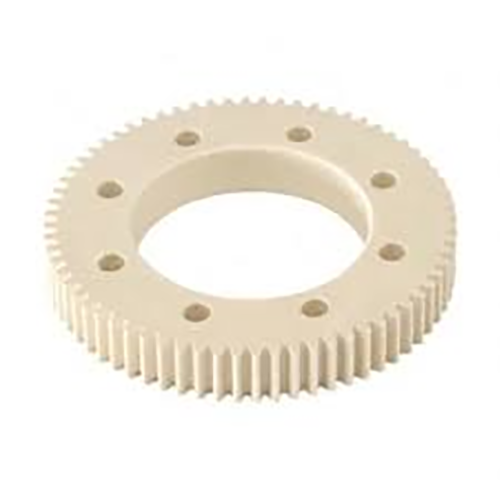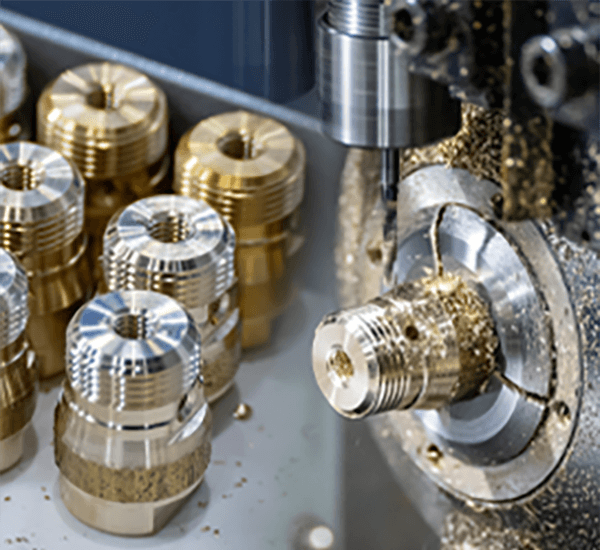
Producing the required exterior polish for a processed workpiece is critical.
- Surface finish callouts in engineering drawings provide the exact specifications for the finish of a part
- Designers use Ra (mean deviation) as a numerical indicator of surface roughness
- Grasping callout meaning is essential to make parts conform to design intent
- Clear finish specification affects lubrication behavior, sliding resistance, and lifespan
- Correctly reading the finish notation is necessary to attain the intended result
CNC Machining — Precision Engineering Explained

Computer-controlled machining embodies a revolutionary manufacturing technique via numerical control software the system carves sophisticated geometries with precision.
- Programmed mills and lathes produce top-tier parts across material types
- CNC’s flexible capabilities match requirements of aerospace and automotive fields
- Numerical control systems guarantee repeatable accuracy between batches
From small prototypes to large-volume runs CNC machining performs a central function in today's manufacturing landscape
Interpreting CNC Specifications
Making sense of CNC specs can seem confusing on first pass
Yet armed with basic knowledge and methodical steps you can manage technical specifications
Open by noting essential values: spindle speed, feeds, accuracy, envelope, control type
All attributes together shape the system’s production performance.
Consider that higher spindle velocity suits pliant materials while elevated feed boosts capacity.
Knowing these correlations permits matching machine capabilities to your specs
Take time to inspect maker literature meticulously.
Vendor literature commonly contains useful guidance and explains terms
What You Should Know About CNC Machines
Numerical-controlled machines are computer-guided systems for accurate automated manufacturing across substrates They process programmed G-code to regulate toolpaths and actuator behavior.
- Common CNC classes include milling machines, turning lathes, routing systems, plasma cutters
- Cutting methods suit steels, plastics, woods, and layered composites
- Furthermore CNC machines allow for rapid prototyping and low-volume production runs making them valuable assets for small businesses and research centers
CNC Basics and Explanations
These tools showcase a blend of mechanical exactness and intelligent software command Versatile machinery employs programmed code to autonomously produce simple parts and complex assemblies The central concept is rendering digital designs as physical parts.
- Numerical control manufacturing
- CAD-to-CAM integration
It performs sequenced precise axis operations dictated by program Manufacturing staff set tooling parameters, oversee machining, and confirm quality outcomes.
Influence of Finish on CNC Operations
Realizing specified surface quality in machining is vital It greatly affects the final product's performance as well as its aesthetics Stock properties, cutting settings, and finishing operations determine surface result.
Refined surfaces boost longevity; rough surfaces can diminish functional performance CNC systems provide diverse tooling and strategies to reach required finishes.
- Including selection of alternative tool profiles |ceramic cutters|spindle rpm choices to produce target surface
- Also surface treatments such as grinding and polishing can refine textures
Comprehending the connections between machining choices and texture secures better results.
CNC Overview: From Use to Application
It constitutes a high-precision manufacturing approach using programmed machine tools to form parts from many materials They process digital commands to produce elaborate components repeatedly Basic knowledge of machine operation, G-code, and tooling selection plays a vital role in success
Industry applications include aircraft, automotive, medical, electronics, and beyond From fine aerospace pieces to intricate mold geometries, CNC underpins complex manufacturing
Callouts and Surface Roughness for CNC Parts
Clear finish definition is critical for CNC machined components It guarantees the finished part fulfills functional and visual criteria Callouts commonly use the roughness average (Ra) system to denote surface finish Measured in micrometers or inches, the number reflects mean surface roughness height.
Weigh required surface smoothness against intended use when defining callouts

In many cases fine finishes are necessary for accurate alignment and tight interfaces
Coarse finishes can benefit components where traction or friction are functional
Provide specific finish callouts in engineering drawings to communicate texture needs Include both the Ra value along with any additional instructions such as machining processes or surface treatments.
Note that precise surface specifications contribute directly to production success
CNC Machine Categories and Capabilities
CNC machining spans many technologies and machine classes to address different operational needs They pair with CAD software to translate designs into cutting commands for precise fabrication.
- Turning equipment specializes in rotating the workpiece to create cylindrical shapes
- Profiling routers cut complex outlines usually in softer materials
- Laser systems produce fine kerfs and detailed shapes in thin materials
Machine selection is dictated by workpiece material, geometric complexity, and precision demands Different CNC platforms supply distinct functionality valuable across industries including automotive and aviation.
Obtaining High-Quality Surface Finish with CNC
Achieving a superior surface finish is crucial in numerous manufacturing processes and CNC machining offers an exceptional method for achieving this goal Through careful tuning of feeds speeds and tool profiles operators manage chip formation and surface generation Moreover premium cutters and correct coolant application enhance surface outcomes Selecting appropriate cutting approaches and detailed machine calibration yields high-quality surfaces.
Programming Strategies for Surface Finish
Managing finish via CNC code is important to secure required surface properties Feed selection spindle rpm and cutter geometry collectively determine texture outcomes Careful selection of these parameters in conjunction with proper lubrication and coolant management can yield a smooth and flawless surface finish.
- Continuous tool maintenance and oversight preserve high finish consistency Continuous tool machine finishing symbols maintenance and oversight preserve high finish consistency Plus regular inspection and maintenance of tools copyright finishing standards
- In order to refine finish consider material, target roughness, and end-use needs
- Simulated machining supports parameter refinement to mitigate surface issues
- Furthermore regular tool maintenance and inspection are essential for ensuring a consistent and high-quality surface finish over time
